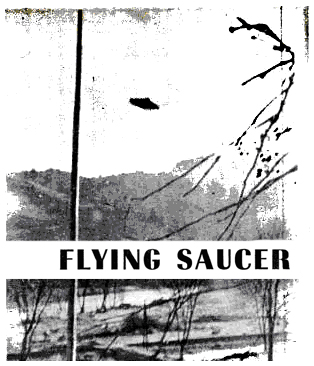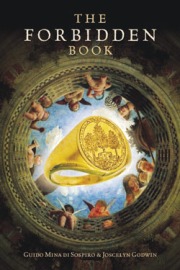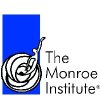
“As psychical research evolved into parapsychology, the
emphasis shifted from the descriptive phenomenology of concrete psi experience to the promise of decisive proof furnished by controlled experiment. Thereby, the nature and meaning of “nature” was itself transmuted.No longer appreciated as immediate felt and sensed quality,nature was reduced to the category of sheer abstract quantity. The new assumption was that only the experts could understand nature and properly interpret its signs and (mathematical) formulae. Furthermore, only those adepts capable of producing effects on demand would be of interest to researchers. Psi was thus removed from its native (public) habitat of everyday life and, like some rare specimen of exotic fauna, confined to the tightly controlled environment of private zoos, the exclusive property of an élite cohort of scientific experts and psychic celebrities.”
– Joseph M. Felser, Philosophical Sensitives and Sensitive Philosophers: Gazing into the Future of Parapsychology
Dogmatism dots the line when it comes to investigating the unseen dimensions of life. Skeptics and believers both muddy already murky water when they force their hand on hypotheses that support preconceptions rather than open the door for honest inquiry.
For nearly a century psychologists argued over the existence of lucid dreaming, when it was always in their ability to simply try the recommended techniques (which are relatively simple) for achieving that state. Even today lucid dreaming is considered a “possibility” rather than a straight fact despite the prevalence of evidence as well as testimony of a multitude of practioners. The concept of lucid dreaming complicated the behaviorist paradigm that provided the basis for much of the 20th centuries economic and industrial philosophies, so it was inconvenient and brushed aside.
On the opposite end we find enthusiasts that use base line phenomenon, such as lucid dreaming, to provide evidence for unverifiable (and often incredibly fantastic) metaphysical and cosmological theories. When the debate over anomalous phenomenon only bounces between these two sides it becomes as ridiculous as the faith vs. reason debates when posed by fundamentalist or creationist groups and radical atheists.
As Professor Joseph M. Felser points out in his article Philosophical Sensitives and Sensitive Philosophers: Gazing into the Future of Parapsychology, the original methodology of groups such as the Society for Psychical Research was more in terms of sociological or anthropological investigations. Collecting data, including subjective experiences, was the basis for understanding the anomalous phenomenon and allowed for the investigations to meet the phenomenon where it was active.
This approach allows some ability to avoid the pitfalls of theorizing a meaning before relating to the experience itself. When anomaly research is justified on the basis of industrial application and results, it’s impossible to honestly investigate the phenomenon.
Chicago anomaly investigator Howard Heim ran a popular ‘Ghost Tour’ in order to privately fund his research. This allowed him the freedom to approach his investigations without expecting cash compensation. When faced with a situation where the anomaly was nothing more than a glass of vodka and a vivid imagination he was given an opportunity to better understand what constitutes potential explanations for reported experiences, something to rule out next time. When there’s money in question, such as with the Stanford PSI experiments, too many of these kinds of disappointments shut down research.
 The power of the anomalous is not in it’s profitability, but rather it’s ability to lead to realization. Joseph Feltzer points to the fact that in the past philosophers such as Socrates (and Peter Kingsley would add Parmenides, Empedocles, and Pythagoras) were the ones whose interactions with what is presently called the paranormal lead to the creation of Western civilization. Mystery is the matrix of creation, it verifies our cultural myths, imports meaning and movement to time, and provides the ground for communion with the interplay of life and death.
The power of the anomalous is not in it’s profitability, but rather it’s ability to lead to realization. Joseph Feltzer points to the fact that in the past philosophers such as Socrates (and Peter Kingsley would add Parmenides, Empedocles, and Pythagoras) were the ones whose interactions with what is presently called the paranormal lead to the creation of Western civilization. Mystery is the matrix of creation, it verifies our cultural myths, imports meaning and movement to time, and provides the ground for communion with the interplay of life and death.
“The fear of ridicule and the anxious silence that grows out of that fear, insidiously spreading itself like a metastasizing cancer, are potent obstacles to a genuinely rational inquiry. In theory, science should welcome anomalies as the harbingers of new discoveries. The scientific intelligence should derive joy from being surprised by new and hitherto unexplained phenomena. After all, isn’t that what science is all about?”
– Joseph M. Felser, Outsiders, Anomalies, and the Future of “Forbidden Science”
 Fortunately a few intrepid sociologists have taken it upon themselves to brave the ridicule and present a collection of baseline data that brings an interesting angle to the field of anomaly research. In Paranormal America: Ghost Encounters, UFO Sightings, Bigfoot Hunts, and Other Curiosities in Religion and Culture, Christopher Bader (Baylor Univ.), F. Carson Mencken (Baylor Univ.), and Joseph Baker (East Tennessee State Univ.) have used the data from the Baylor Religion Survey, and relevant field work, to provide a demographic profile of paranormal beliefs in the United States.
Fortunately a few intrepid sociologists have taken it upon themselves to brave the ridicule and present a collection of baseline data that brings an interesting angle to the field of anomaly research. In Paranormal America: Ghost Encounters, UFO Sightings, Bigfoot Hunts, and Other Curiosities in Religion and Culture, Christopher Bader (Baylor Univ.), F. Carson Mencken (Baylor Univ.), and Joseph Baker (East Tennessee State Univ.) have used the data from the Baylor Religion Survey, and relevant field work, to provide a demographic profile of paranormal beliefs in the United States.
This is not a book that addresses anomalies or outre phenomenon in themselves, rather it is an in depth look at the statistical demographics for paranormal belief and it’s relation to race, gender, social class, and religious beliefs. The areas covered are limited to the popular understanding of UFO’s, ghosts, professional psychics, and cryptozoology, each explained through specific field work that the authors undertook.
The strength of Paranormal America lies in it’s ability to avoid joining the debate on either extreme. Reporting the field work in a straightforward manner, the book allows for the statistics to stay in the foreground.
For all sides with an interest this presents a valuable picture of factors attending belief in, and claims of experiences with, anomalous phenomenon. For parapsychologists and researchers this data is a useful tool for understanding the sociological factors that surround the phenomenon. This broad spectrum of data is the first of its kind, and represents the most in depth statistical analysis of paranormal beliefs and experiences in the United States.
Using the language of economy and marketing the book approaches the paranormal from a purely demographic perspective. The book focuses on statistical averages, even in conducting the field work itself. For instance, rather than immerse themselves in the culture of former military intelligence assets, professional remote viewers, or scientists who have participated in psi research, the authors go to a Texas psychic fair and immerse themselves in commercial clairvoyance and astrology. This middle road serves the book well in it’s purpose, providing a good picture of the U.S. paranormal market, and leaves deeper investigation to the numbers themselves.
Their field work with Pentecostal and Holiness congregations provide excellent alternatives to the focus on secular phenomenon. The relationship between paranormal beliefs and religious beliefs forms a main component of the book’s analysis. A historical approach may disspell some of the authors conclusions, but the statistical data brings attention back to the original methods of phenomenal investigation and that gives a great value to the work.
Adding a deeper qualitative element to each of the categories the book covers, and getting into the correspondences from the other areas of the Baylor Religion Survey will be the work of subsequent investigators. As it stands Paranormal America provides a good base line for future research.
Note: Thanks to New York University Press for providing a copy of Paranormal America for research and review.















